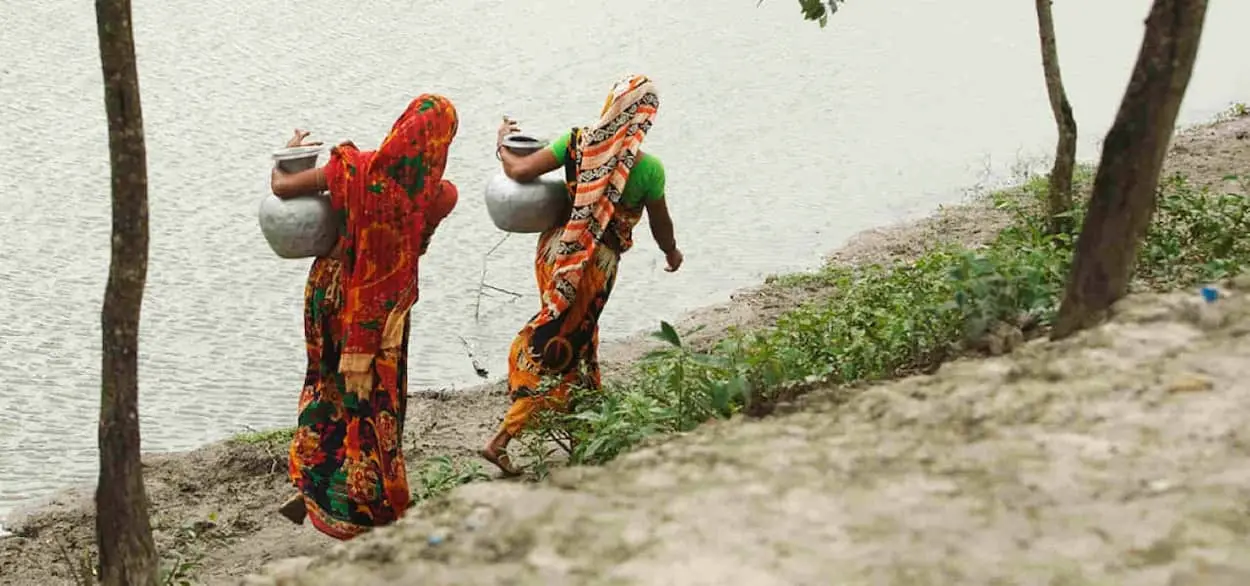Please note this is a legacy program and no longer active
The Challenge
Along the Bay of Bengal, which spans the coasts of Bangladesh and India, communities struggle to cope with the effects of climate change. Cyclones, rising sea levels and temperatures, and coastal erosion are some of the most pressing risks for this region. And their impact goes beyond the environment. All of these elements play key roles in destabilizing people’s livelihoods, homes, and well-being.
"If another big storm hits, we will lose everything again. We have no security."
When Cyclone Aila hit the region in 2009, its impacts were still felt in 2014. Over 9.3 million people lost homes, lives, and livelihoods. “During Aila, we had nothing. We were left with nothing. Our people are very vulnerable,” Polo Dasi of Shyamnagar, Bangladesh told us. “If another big storm comes, we will lose everything again. We have no security.”
We know that the current effects of climate change cannot be reversed. So, what could be done?
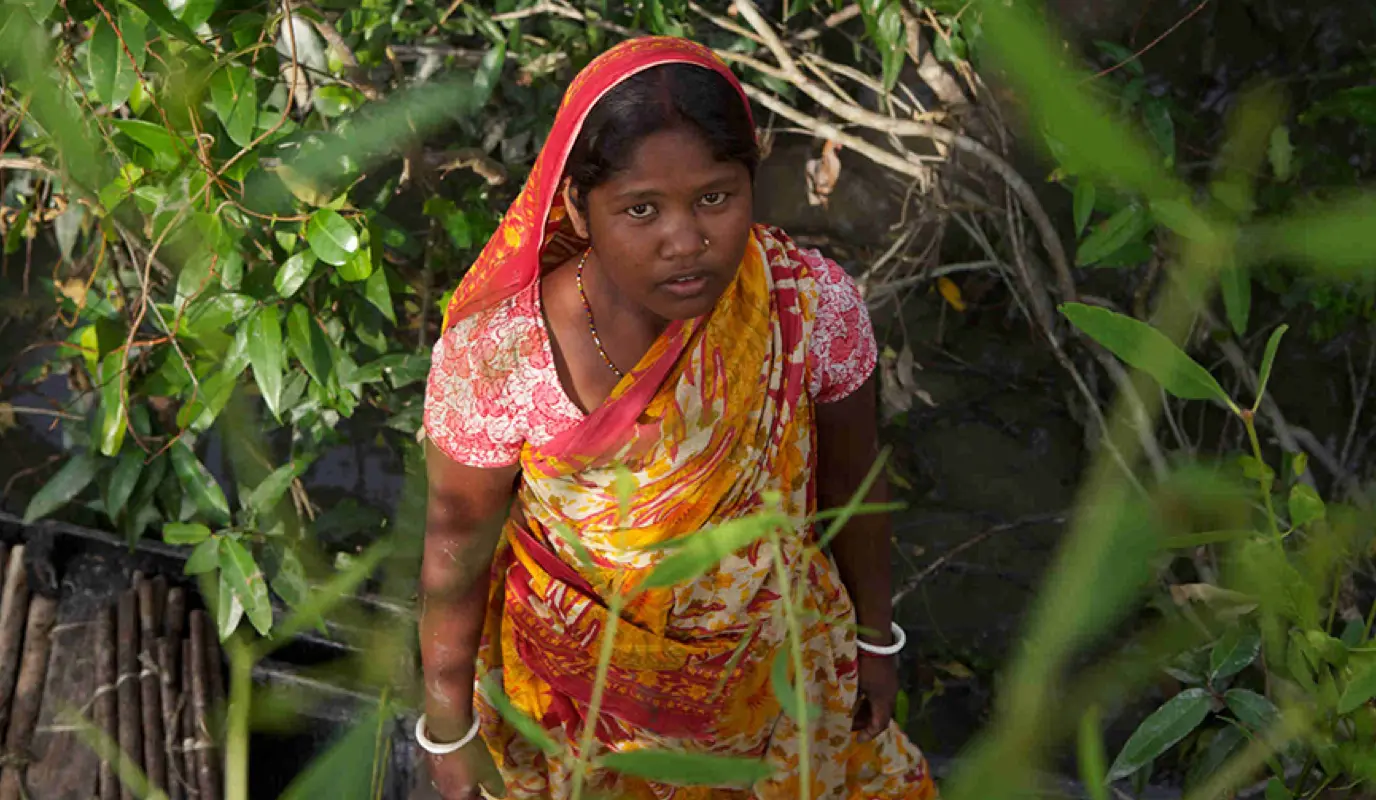
A Method For Coping With the Madness
Concern had been working in the Bay of Bengal region for over 30 years around the time of Aila, and part of our work focused on building security for the most vulnerable communities for when the next big storm hit. Much of this work fell under the umbrella of disaster risk reduction.
Disaster risk reduction (DRR) is a method that protects the lives and livelihoods of communities and individuals who are most vulnerable to natural disasters or man-made emergencies. The approach has three key dimensions:
- Exposure to hazards
- Vulnerability and capacity for handling each hazard
- Characteristics of each hazard
The goal is to limit a crisis’s negative impact on those who stand to lose the most. In some cases, we can reduce the size of a disaster, its strength, or even how frequently it occurs. In tandem with this, we can also make sure that those who are most exposed to these hazards are able to better anticipate, survive, and recover.
With hundreds of communities in this one hazard-prone area, we realized that there was room to do more with DRR along the Bay of Bengal.
"Paribartan" means "change" in both the Bangla and Oriya languages. Over five years, change came to 1.2 million people in 204 communities across coastal Bangladesh and India.
Changing the Game
In 2011, with a grant from the EU, Concern launched “Increasing Resilience and Reducing Risk of Coastal Communities to Climate Change and Natural Hazards in the Bay of Bengal.” The much shorter name, which still gets the point across quite nicely, became Paribartan, which means “change” in both of the major languages in the region (Bangla and Oriya).
The project’s goal was spelled out in the official name: To help the poorest and most vulnerable communities in the Bay of Bengal break the cycle of poverty by reducing their risks to the damaging impacts of climate change. Over five years, we would work with more than 1.2 million people in 204 communities across six districts in two countries (120 communities in Bangladesh, 84 in India).
Creating a Plan for Both Sides
Paribartan became the incubator for communities, in order to learn about effective disaster risk reduction, create their own plans tailored to their own needs and priorities, pilot innovative ideas for coping with climate change, and to eventually share lessons from these initiatives to help at broader levels. All of this was anchored within the communities themselves.
Across these 204 communities, Concern supported the organization of disaster risk management committees. We worked with each committee to assess their levels of risk and vulnerability in relation to climate issues and emergencies. As committee members explained to us the risks they faced, we told them about the opportunities they had to address these risks in terms of local planning and government advocacy. On the other side of the equation, we worked with local-level government officials to advocate for the benefits of engaging with the communities they represented.
As a result of advocacy meetings between government officials and community committees, local governments incorporated some of the key priorities from community plans into their budgets, which meant that community initiatives received vital funding.
At the community level, Concern supported the organization and training of disaster risk management committees. At the government level, Concern worked with local officials to advocate for the benefits of engaging with the communities they represented. The priorities of these communities became priorities to their politicians.
Good Governance
Building the capacity of government offices was key to bringing about fundamental changes at the community level. New awareness of climate change and disaster preparedness has resulted in increased attention to and funding for these initiatives, especially in the areas hit hardest by erratic weather patterns.
The newly formed Sahi Paribartan Committees (SPC), Gram Paribartan Committees (GPC) and Panchayat Paribartan Committees (PPC) became important platforms for discussion and deliberation. The most vulnerable communities now have a seat at the table.
For those communities, having access to and knowledge of viable mitigation and adaptation measures have also increased their capacity to deal with disasters and even daily effects of climate change.
"The 'Paribartan' Project brought me closer to the people. The Gram Sabhas have become more active and I am able to understand, relate and address their needs."
Mapping All Parts Of a Community
Even within communities where everyone lives below the poverty line, there are levels of marginalization and inequality. With Paribartan, we soon learned that women in these coastal communities were disproportionately affected by climate change (along with people living with HIV/AIDS and disabilities).
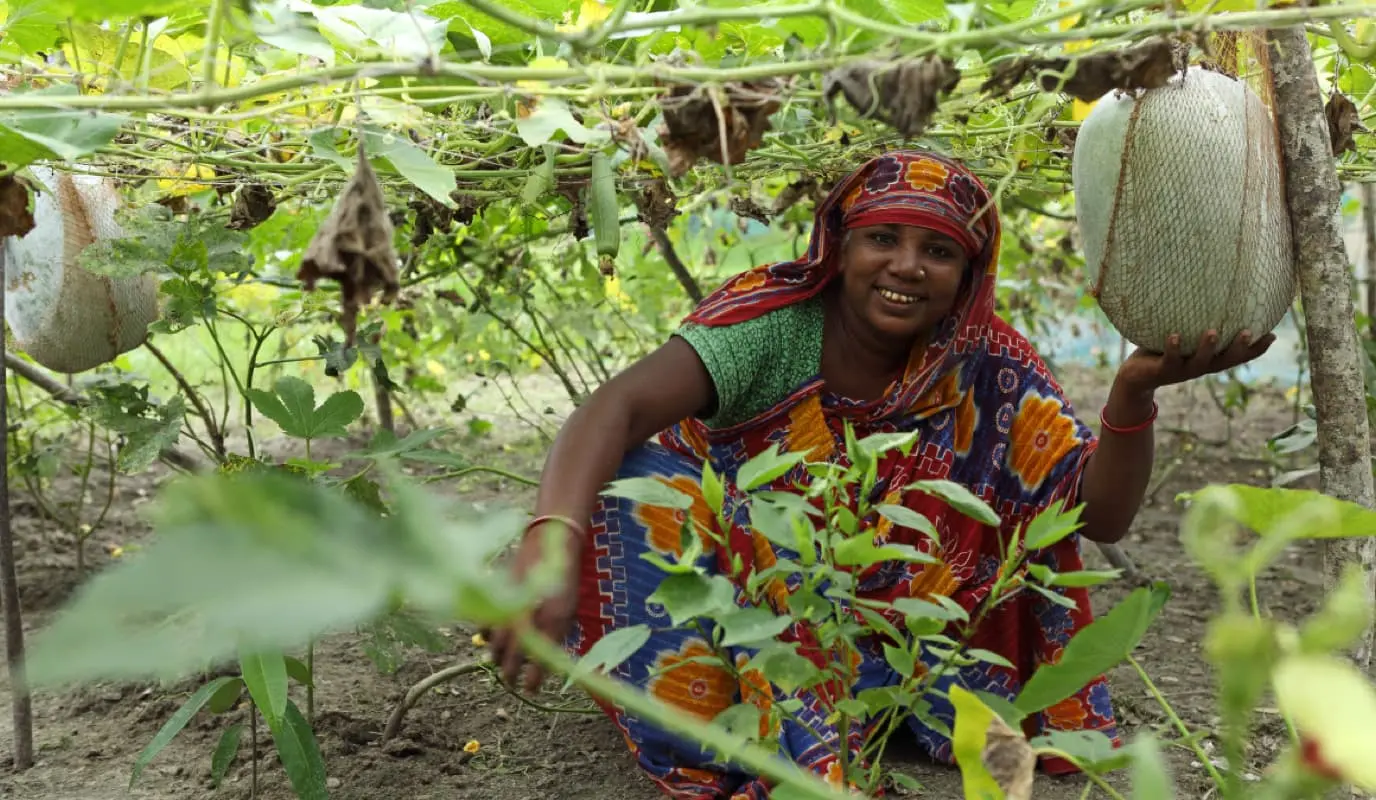
As communities came together to form committees, we ensured that women had equal representation. In many communities, teenagers also joined the process. As one participant from Odisha, India put it, this was exciting for the older generations : “We feel proud when the younger girls come and sit with us; we are already inspiring the next generation.”
Part of the process for disaster risk reduction planning involves charting out the hazards and vulnerabilities in a community, to literally place these concerns on a map. In many communities, with equity as a fundamental component of Paribartan overall, there soon became multiple maps that showed not only the hazards of a village, but also the houses where elderly people, disabled people, or others who required extra help in an evacuation lived. Another map charted out resources, both in terms of skills (swimming, first aid, etc.) and physical assets (bikes, cars, or mobile phones).
"With the help of the project, I was able to purchase my own land and get my daughter married. I have taken more land on lease and will work harder to earn more."
Building Teams
Concern conducted workshops for task forces in each village, including sections on:
- Search and rescue
- First aid
- Shelter management
- Water and sanitation
- Early warning systems
Each task force was then divided into five units, each one carrying a specific responsibility such as spreading the word about an approaching disaster, providing immediate first aid, or rescuing vulnerable individuals such as pregnant women, children, and the elderly. This enriched the understanding of local communities on ways to withstand, respond to, and recover from the impacts of an emergency.
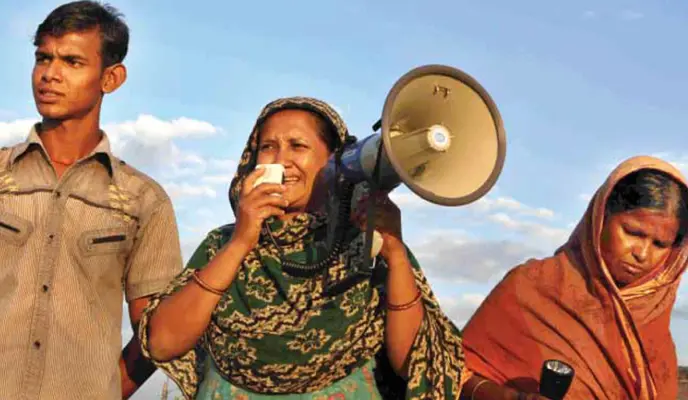
We also distributed early warning kits to the participating villages. The contents of each kit varied based on context, but were designed to meet the same goals. In Bangladesh before Aila, for instance, people had very limited means of communication (including only one available radio). Systems, such as differently colored flags, are now in place for future emergencies that can reach all community members quickly and efficiently.
"For the first time we clearly see what risks we face and what resources we have in our village. If you have the knowledge, than you can act on it!"
Putting Paribartan to The Test
In Bangladesh, Cyclone Mahasen made landfall in May 2013 in the same area as Aila. Dipankar Mandal and his wife Parvati were lucky — their area along the coast was spared the worst of the cyclone, but still, they had been prepared. Their village team first got information about the approaching cyclone over the radio. The local task force team mobilized and organized quickly to promote evacuation. The megaphone provided in their village’s early warning kit was hard to ignore, and Dipankar and Parvati along with their family of six evacuated to higher ground.
Mahasen was not equal in size to Aila, however it still could have been worse in terms of impact. Thanks to their local committee, however, no lives were lost in this community.
This was especially important for communities where women and children were often more likely to lose their lives. With women playing a major role in village volunteer groups, they also made sure that the needs of female community members were taken into account during early warning activities and afterwards at cyclone shelters.
"The switch to organic fertilizers and pesticides has helped us save money and increase our yield. We now earn almost double. With the extra money, we are sending our children to school. We have even opened bank accounts in our name!"
Everyday Adaptation
Even in between emergencies, Paribartan piloted projects to help communities respond to the everyday adjustments of climate change. Some of these projects included:
- Composite agriculture: A “layered” method of farming that maximizes the full cultivation potential of a tract of land — helps improve food security and diversity by growing hardy, saline-tolerant crops while raising animals like ducks, chickens, shrimp, and fish.
- Organic fertilizers and natural pesticides: Switching to these improve crop yields and nutrition while protecting the environment.
- Rooftop rainwater harvesting systems: These provide communities with a safe, steady supply of water, which has become increasingly scarce as salt water from the rising ocean infiltrates freshwater rivers and ponds.
- Structural reinforcements: Added to homes built along river shores or on ground prone to flooding, these have strengthened families’ homes against the effects of severe weather.
- Mangrove: These plantations nurture local trees that will be planted to rehabilitate degraded land.
- Paribartan Student Forums: An initiative to teach students about climate change risks and coping methods and training them to promote messages throughout their communities.
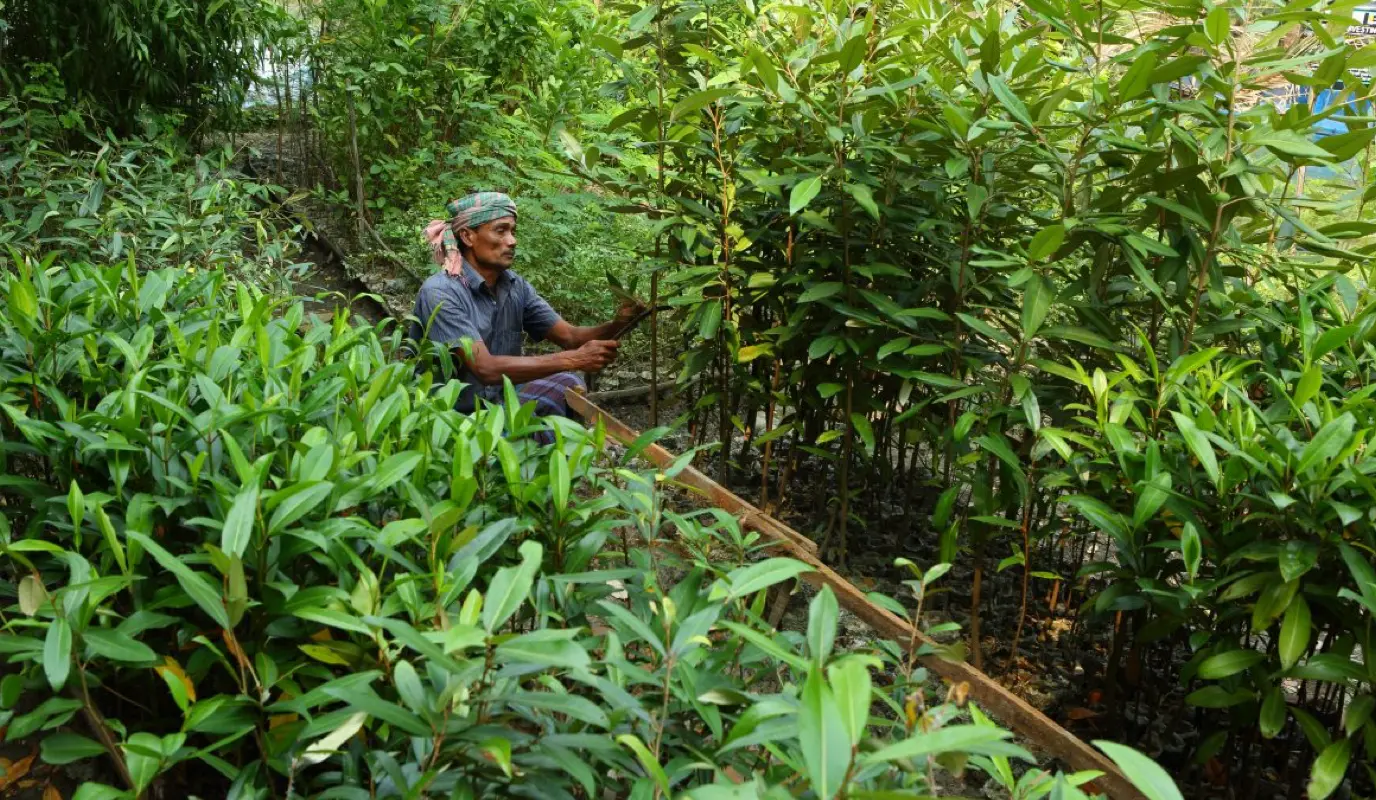
Your Support
Your tax-deductible gift makes you part of a vital community that enables us to reach over 25 million people each year with lifesaving interventions like Paribartan.


